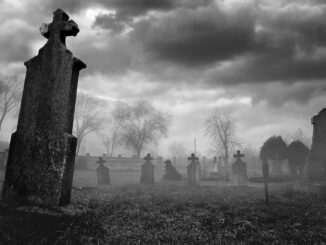
When I was 13 years old, my older cousin introduced me to a genre of music that blew me away: heavy metal. Bands like Iron Maiden, Metallica, Slayer, Mercyful Fate peaked my interest. Of course, my fundamentalist mother hated it. Yet I loved it then, and still love it to this day.
Back then metal got a lot of flack from people, especially the mainstream media. Metal was blamed for teen satanism; this blame was later found to be purely manufactured. Heavy metal was also blamed for teen drug use which may be a little harder to refute. But, the issue that got blamed on metal was an upswing in teen suicide and no song was blamed more than, “Suicide Solution” by Ozzy Osbourne.
In 1986 a family filed a wrongful death lawsuit against Osbourne when their severely depressed son killed himself while the song played in the background. Osbourne claimed that the song was about the alcohol related death of AC/DC front man Bon Scott. Osbourne won the case, getting off Scott free. Pun intended.
Many years before the classic song off Ozzy’s album The Blizzard of Ozz, one song may have actually been responsible for 19 suicides. That song was Gloomy Sunday, the song with a body count.
In 1933, Hungarian Composer Rezso Seress found himself in a bit of a pickle. For years Seress struggled as a songwriter, being turned down time and time again by publishing houses who cited his music as being less than spectacular. With a lack of income and failure as a musician, he lost the love of his life.

T-Shirts, Mugs and More!
We now have t-shirts, tarot decks, ESP cards, coffee mugs, face masks, and much more merchandise available for purchase. Every dollar spent helps fund Paranormal Study!
Feeling down, Seress moved to Paris destitute, hungry and feeling sorry for himself. Then one day, while contemplating suicide, Seress was hit with inspiration and wrote a song entitled in his native language, Vege A Vilagnak, or The End of the World. Finally, a music publisher took notice, and the song was published.
When the song reached American shores, it took on a much more sinister reputation. Upon being translated to English, the lyrics contained a verse about suicide so it was immediately nicknamed the Hungarian Suicide Song, or Gloomy Sunday.
Years after the song was published at the height of the Great Depression, a disturbing trend was taking shape.
Here in the US and in Europe, bodies of suicide victims were being discovered. Hangings, slit wrists and self-inflicted gunshot victims were turning up. There appeared to be nothing in common between the victims except one tiny thing: sheet music of Gloomy Sunday was found at every single victim’s home.
Those that knew the victims told investigators that right before they committed suicide, they were heard playing Gloomy Sunday. Nineteen suicides were blamed on the song. In fact, it was so bad that the BBC banned the song completely. They were so deadset against the song, the BBC told jazz songbird Billie Holiday that she was never allowed to perform the song on British shores.
And how did Rezso Seress take the news that his song was directly linked to 19 suicides? The only way he knew how.
In 1968, poor and penniless again, Rezso Seress leapt from the window of his tenement. Unfortunately for him he survived the attempt. But later succeeded while in the hospital recovering from the previous attempt. He committed suicide using a piano wire. Rezso Seress was victim number 20.
Was he the victim of his own song?
To this day the debate rages on whether or not witnessing violence and death in music, tv or movies can cause a seemingly normal person to snap and either go on a killing spree or turn that violence inward upon themselves. Regardless, given the reputation of Gloomy Sunday, I think I will stay far away from that song – even if there is ever a heavy metal cover of the song.
If you found the content in this article to be of any value to your paranormal studies, please let us know in the comments below. Feel free to share this article with your friends as well because if you found it interesting, they might too.
Do You Want To Know More?
Our content creators also have podcasts that go much deeper into paranormal topics.
Tim Woolworth’s Walk in the Shadows, an episodic masterclass that consists of a deep dive into all things Fortean, paranormal and supernatural.
Rick Hale teams up with Stephen Lancaster in The Shadow Initiative where they explore various paranormal topics and discuss current paranormal news.
Please check these shows out and visit Paranormal Study social media to keep up to date on articles and all the things our authors are doing.




Be the first to comment